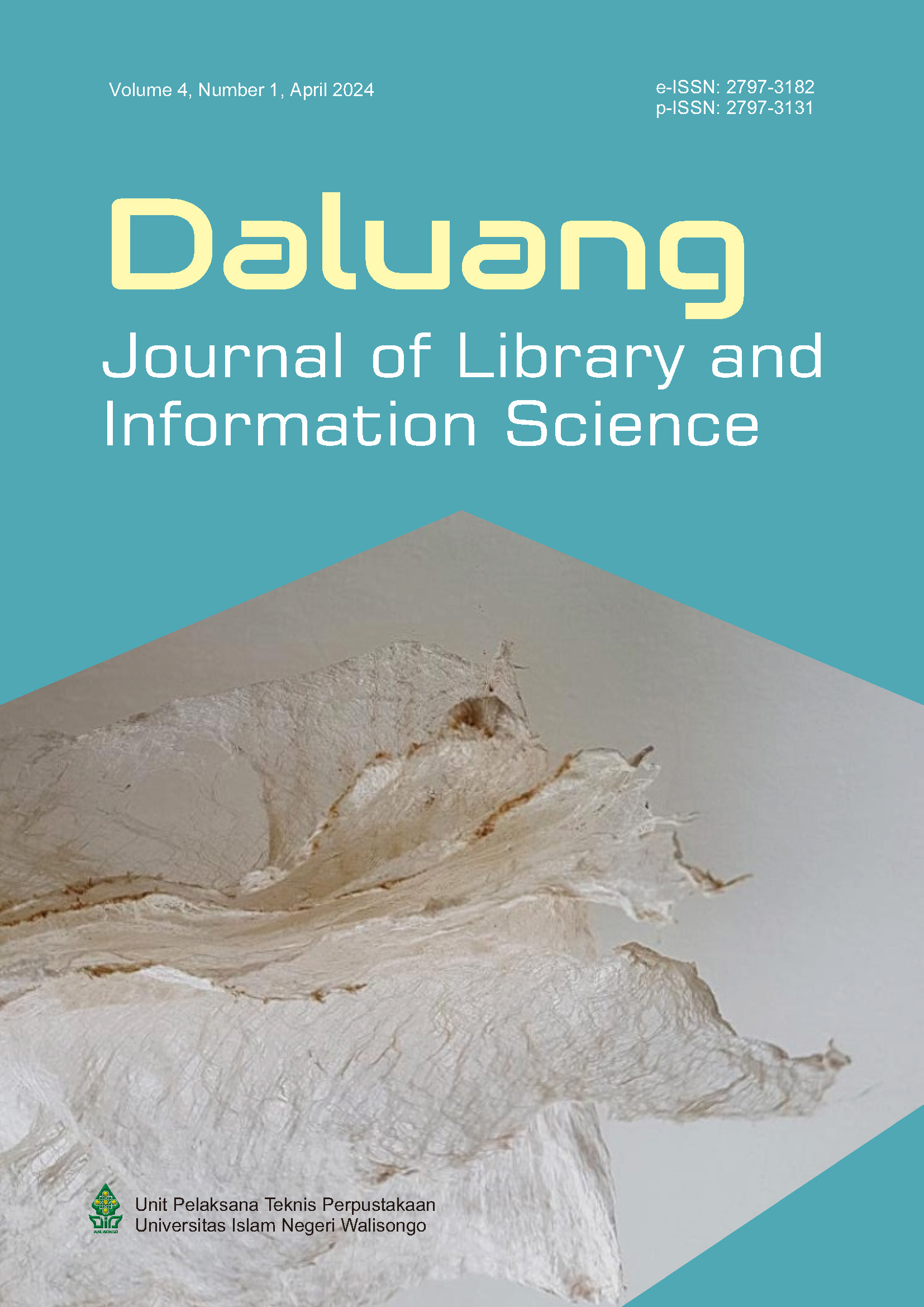Describing the Stereotype Lift efforts of librarians: A case study of female librarians
Main Article Content
Abstract
Purpose. This research delves into the stereotype-laden environment faced by female librarians and the efforts undertaken to counteract these stereotypes. In situations where the worth or ability of an outgroup is questioned, stereotype lift makes people perform better.
Methodology. This study utilized qualitative research with a single-case study approach. The participants of the study were five female librarians working within the Zamboanga Peninsula, Philippines. The interview guide questions were used to gather their responses alongside observation and some documents. Permission from the school president was secured first before going to the library, which was also similarly done for online participants. The librarians were in terms of their physical characteristics, emotions, and how they catered to the patrons and researchers. In addition, ocular visits were conducted in which researchers took photos of what could help support the observation. After having the necessary data, Category Construction was utilized to analyze it.
Results and discussion. The findings revealed the stereotypes the respondents received: stern and sedentary workers. These stereotypes unveiled how it affects their work performance by remaining unaffected and becoming more approachable. With these effects encountered, the female librarians were able to come up with two strategies for dealing with the stereotypes: remaining calm and positively changing oneself. The librarians also promoted equity, diversity, and inclusion by providing equal treatment to all and organizing a club for book lovers.
Conclusions. The effect of stereotypes on librarians was not manifested since some of them perceived it as usual, while some let it change them to better librarians.
Downloads
Article Details
This work is licensed under a Creative Commons Attribution-NonCommercial-NoDerivatives 4.0 International License.
Articles published in Daluang Journal of Library and information Science are available under Creative Commons Attribution Non-Commercial No Derivatives Licence (CC BY-NC-ND 4.0). Authors retain copyright in their work and grant Daluang Journal of Library and information Science right of first publication under CC BY-NC-ND 4.0. Users have the right to read, download, copy, distribute, print, search, or link to the full texts of articles in this journal, and to use them for any other lawful purpose.
Articles published in Daluang Journal of Library and information Science can be copied, communicated and shared in their published form for non-commercial purposes provided full attribution is given to the author and the journal. Authors are able to enter into separate, additional contractual arrangements for the non-exclusive distribution of the journal's published version of the work (e.g., post it to an institutional repository or publish it in a book), with an acknowledgment of its initial publication in this journal.
This copyright notice applies to articles published in Daluang Journal of Library and information Science volumes 1 onwards.
References
Ali, S., Yu, H., & Amran, N. (2018). Library user perception towards librarians in public library:A Malaysian story. International Journal Academic Research in Business and Social Sciences, 7(5), 452–463. https://doi.org/10.6007/IJARBSS/v8-i9/4604
Aparis, K. M. O., Louie, J. Y. K., & Zabala, T. (2018). Perception of a profession:Librarians and stereotyping in social networking sites. Semantic Scholar. https://digitalcommons.unl.edu/libphilprac/433
Baxter, M. (2014). Stereotype or archetype? The librarian in popular culture. Carolina Digital Repository. https://doi.org/https://doi.org/10.17615/vv7j-5a24
Blackburn, H. (2015). Gender stereotypes male librarians face today. Criss Library Publications, 12(9). https://digitalcommons.unomaha.edu/crisslibfacpub/18/
Bonnet, J., & McAlexander, B. L. (2013). How do you like me now: An image-rating study of librarians approachability in imagine, innovate, inspire. The Proceedings of the ACRL Conference. @inproceedings{Bonnet2013HowDY, title={How Do You Like Me Now ? : An Image-rating Study of Librarian Approachability}, author={Jen Bonnet and Benjamin L. McAlexander}, year={2013}, url={https://api.semanticscholar.org/CorpusID:201732379} }
Borchard, L., Wimberley, L., Eng-Ziskin, S., & Fidgeon, A. (2018). Should We Shush about the Stereotype? Examining Student-Generated Images of Librarians. Librarianship: The International Journal of the SLA Academic Division, 1(8), 28–53. https://pal-ojs-tamu.tdl.org/pal/article/view/7036/6120
Creswell, J. W. (2014). Research design: qualitative, quantitative, and mixed methods approaches (3rd ed.). SAGE Publications, Inc. https://bitly.ws/xfiG
Garcia, M. A., & Barbour, J. B. (2018). “Ask a Professional—Ask a Librarian”: Librarianship and the Chronic Struggle for Professional Status. Sage Journals, 32(4). https://doi.org/https://doi.org/10.1177/0893318918776798
Hamilton, D. L., & Sherman, J. W. (2021). Stereotyping and Evaluation. Oxford University Press, 1–68. https://bitly.ws/32IxL
Hu, S. (2019). Chinese immigrant academic librarians’ experiences and perceptions of career advancement in New Zealand. AUT Library Summer Conference. http://researcharchive.vuw.ac.nz/handle/10063/9459
Kunda, Z., & Oleson, K. C. (2020). Maintaining Stereotypes in the Face of Disconfirmation: Constructing Grounds for Subtyping Deviants. Journal of Personality and Social Psychology, 68(4), 565–579. https://doi.org/https://doi.org/10.1037/0022-3514.68.4.565
McClellan, S., & Beggan, J. K. (2019). Addressing the Dilemma of the Ironic Librarian: Self-Reported Strategies Librarians Use to Enhance Approachability. The Library Quarterly, 89(3), 254–273. https://doi.org/https://doi.org/10.1086/703471
Merriam, S. B., & Tisdell, E. J. (2016). Qualitative Research: A Guide to Design and Implementation. Jossey-Bass A Wiley Brand.
Micle, M. (2014). Stereotypes regarding libraries and librarians: An approach of Romanian school and academic libraries. Procedia - Social and Behavioral Science, 163, 92–98.
Ojei, L. N., & Popoola, S. O. (2023). Users’ perception of staff attitude as a determinant of effective library service delivery in federal universities in South-west, Nigeria. Digital Commons University of Nebraska - Lincoln. https://bitly.ws/32GPn
Onwubiko, E. C. (2022). Social perception of the image of public libraries and librarians by users as a catalyst of transformation: A survey. Library Philosophy and Practice, 1–30. https://n9.cl/n6lty
Rubin, R. E. (2016). Foundations of library and information science (4th ed) (4th ed.). American Library Association.
Vassilakaki, E., & Moniarou- Papaconstantinou, V. (2014). Identifying the prevailing images in library and information science profession: Is the landscape changing? New Library World, 115(8), 355–375. https://doi.org/http://doi.org/10.1108/nlw-03-2014-0029
Walton, G. M., & Cohen, G. L. (2003). Stereotype Lift. Journal of Experimental Social Psychology, 39(5), 456–467. https://doi.org/https://doi.org/10.1016/S0022-1031(03)00019-2
Wells, J. A. (2013). The female librarian in the film: Has the image changed in 60 years? School of Information Student Research Journal, 3(2). https://doi.org/https://doi.org/10.31979/2575-2499.030202



